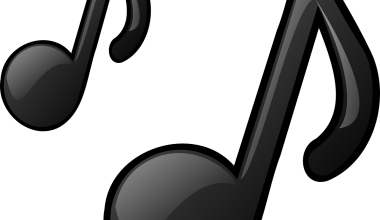In today’s digital landscape, advertising plays an essential role in shaping the success of artists and their music. The music industry has seen a dramatic shift from traditional promotional methods to a more complex, digital-driven approach. From leveraging social media platforms to utilizing data analytics, the modern-day strategies for advertising in the music industry are diverse and evolving. This comprehensive guide explores the evolution of advertising in the music industry, highlights key strategies, examines emerging trends, and outlines best practices to help artists and marketers effectively promote music and engage audiences.
The Evolution of Advertising in the Music Industry
Traditional Advertising Methods
Before the digital age, traditional advertising channels like radio, television, and print were the primary means of promoting music. These methods relied heavily on broad-reaching platforms to capture the attention of potential listeners. Radio spots were particularly significant, as they provided a direct line to music enthusiasts tuning in during their daily routines. Television commercials also played a crucial role, especially for mainstream artists, by offering a visual and auditory experience that could captivate viewers. Despite the rise of digital media, these traditional avenues continue to hold relevance, especially when combined with digital strategies to create a holistic promotional approach.
The Digital Revolution
The advent of the internet and digital technologies revolutionized the way music is advertised. The rise of platforms such as YouTube, Instagram, and Spotify has opened new avenues for artists to reach global audiences. Unlike traditional media, digital platforms offer precise targeting, allowing advertisers to tailor their messages to specific demographics, interests, and behaviors. For example, YouTube ads can be targeted based on viewers’ past searches, subscriptions, and video preferences, ensuring that the right audience sees the content. This level of specificity is unparalleled in traditional media and has made digital advertising an indispensable tool in the music industry.
Social media platforms have become a cornerstone of music advertising, offering unique opportunities for engagement and content sharing. Platforms like Instagram and TikTok are particularly influential, with their visually-driven interfaces and high user engagement rates. Instagram’s features, such as IGTV, Stories, and Reels, allow artists to share various forms of content, from music videos to behind-the-scenes footage. TikTok, with its algorithm favoring viral content, has become a breeding ground for new music trends. Songs that gain popularity on TikTok often experience a surge in streams on platforms like Spotify and Apple Music, illustrating the platform’s power in influencing music consumption.
Key Strategies for Advertising in the Music Industry
Social media marketing is a critical component of any music advertising strategy. Platforms like Instagram, Facebook, and Twitter offer artists the ability to connect directly with fans, share updates, and promote new releases. Instagram, in particular, provides multiple avenues for promotion, including paid ads, influencer partnerships, and organic posts. Instagram Stories and Reels are effective for showcasing short, engaging content, while IGTV allows for longer video formats. By leveraging these tools, artists can maintain a consistent online presence, engage with their audience, and drive traffic to their music.
Influencer Partnerships
Influencer marketing has become a powerful tool in music promotion. Collaborating with influencers allows artists to tap into established communities and reach new audiences. Influencers can help promote new releases, tour dates, and other music-related events, often through authentic, relatable content. On platforms like TikTok, influencers have the ability to make songs go viral by incorporating them into dance challenges, lip-sync videos, or other creative formats. This organic promotion can lead to a significant increase in streams and downloads, making influencer partnerships an effective strategy for advertising in the music industry.
Paid Advertising
Paid advertising remains a vital component of a comprehensive music marketing strategy. Platforms like Facebook, Instagram, and YouTube offer sophisticated ad targeting options that allow artists to reach specific demographics. Facebook Ads, for example, can be customized based on age, location, interests, and even behavior. This precision ensures that the ads are seen by users who are most likely to engage with the content. Similarly, YouTube’s TrueView ads allow artists to promote their music videos to relevant audiences, offering a cost-effective way to gain exposure. Paid advertising can be particularly effective during album launches, concert promotions, and other key events.
Content Marketing
Content marketing involves creating and sharing valuable content to attract and retain an audience. For musicians, this can include blog posts, videos, podcasts, and social media updates. A well-maintained blog can serve as a platform for artists to share their thoughts, stories, and updates with fans. Video content, such as music videos, lyric videos, and vlogs, can be shared on platforms like YouTube and Instagram, providing fans with a deeper connection to the artist. Podcasts and interviews offer another avenue for content marketing, allowing artists to discuss their music, creative process, and other topics of interest.
The Role of Data Analytics in Music Advertising
Personalization and Targeting
Data analytics has become an integral part of advertising in the music industry. With access to vast amounts of data, artists and marketers can gain insights into audience behavior, preferences, and demographics. Platforms like Spotify for Artists provide detailed analytics, including data on listener demographics, geographic distribution, and listening habits. This information allows artists to tailor their advertising strategies, ensuring that their content reaches the right audience. For instance, if an artist notices a high engagement rate in a particular region, they can target that area with specific ads and promotions.
Measuring Success
Measuring the success of advertising campaigns is crucial for optimizing future efforts. Key performance indicators (KPIs) such as reach, engagement, and conversions provide valuable insights into the effectiveness of a campaign. Reach refers to the number of people who see an ad, while engagement measures interactions such as likes, shares, and comments. Conversions track actions taken by the audience, such as streaming a song, visiting a website, or purchasing a concert ticket. Tools like Google Analytics and social media insights offer comprehensive data on these metrics, helping artists evaluate the success of their campaigns and make data-driven decisions.
Emerging Trends in Music Advertising
Interactive and Immersive Experiences
The rise of interactive and immersive experiences is a significant trend in music advertising. Technologies like Augmented Reality (AR) and Virtual Reality (VR) offer unique ways for fans to engage with music. AR filters on platforms like Instagram and Snapchat allow users to interact with digital elements, creating a more engaging experience. VR concerts provide an immersive experience, allowing fans to experience live performances from the comfort of their homes. These technologies not only enhance the fan experience but also offer new opportunities for artists to promote their music.
User-Generated Content
User-generated content (UGC) has become a powerful promotional tool in the music industry. Encouraging fans to create and share content related to a song or album can significantly boost engagement and visibility. Hashtag challenges on TikTok, for example, encourage users to create videos using a specific song, potentially making it go viral. UGC not only provides free promotion but also fosters a sense of community among fans, making them feel more connected to the artist.
Integration of Music and Gaming
The integration of music and gaming is an emerging trend that offers new promotional opportunities. Games like Fortnite and Roblox have hosted virtual concerts, providing artists with a platform to reach a massive audience. These events often include exclusive content, such as new song releases or special merchandise, creating a unique experience for fans. The crossover between music and gaming offers artists a new way to engage with fans and expand their reach.
Best Practices for Advertising in the Music Industry
Consistent Branding
Maintaining consistent branding across all platforms is crucial for building recognition and trust. This includes using a consistent color scheme, logo, and tone of voice. Whether it’s a social media post, a music video, or an album cover, all promotional materials should align with the artist’s brand identity. Consistent branding not only makes the artist more recognizable but also helps convey their unique style and message.
Engaging Visuals
Engaging visuals are essential for capturing the audience’s attention in a crowded digital landscape. High-quality photos, videos, and graphics can make an ad stand out and attract more viewers. For example, a visually appealing album cover can make a significant impact on streaming platforms, where potential listeners often make decisions based on artwork. Investing in professional photography and videography can significantly enhance the visual appeal of promotional materials.
Authentic Engagement
Authenticity is key to building a loyal fan base. Fans appreciate genuine interactions and are more likely to support artists who are authentic and relatable. Whether through personal stories, candid photos, or live Q&A sessions, artists should strive to connect with their audience on a personal level. Authentic engagement not only strengthens the artist-fan relationship but also fosters a sense of community.
Strategic Use of Platforms
Different platforms serve different purposes in music advertising. Understanding the strengths and weaknesses of each platform can help artists tailor their strategies for maximum impact. For example, TikTok is ideal for creating viral content and reaching a younger audience, while Instagram is better suited for building a community and showcasing visual content. YouTube, on the other hand, is a powerful platform for long-form video content, such as music videos and vlogs. By strategically using each platform, artists can reach a wider audience and achieve their promotional goals.
Regular Analysis and Adjustment
The music industry is constantly evolving, and so should advertising strategies. Regularly analyzing the performance of ad campaigns and making necessary adjustments is crucial for staying relevant. This could involve experimenting with different ad formats, testing new platforms, or refining the target audience. By staying adaptable and open to change, artists can ensure their advertising efforts remain effective and aligned with industry trends.
Conclusion
Advertising in the music industry is a dynamic and multifaceted process that requires a strategic approach. From leveraging social media to exploring emerging trends like AR and gaming, there are numerous ways for artists to promote their music and connect with fans. By staying authentic, maintaining consistent branding, and continuously analyzing and adjusting their strategies, artists can maximize their advertising efforts and achieve long-term success. As the industry continues to evolve, staying informed about the latest trends and best practices will be key to thriving in the competitive world of music advertising.
For further reading, explore these related articles:
- Understanding View Velocity and Its Impact on YouTube Trends
- The Future of Music Royalties: Trends and Predictions
- Future Trends in Music Distribution on Spotify
For additional resources on music marketing and distribution, visit Deliver My Tune.






